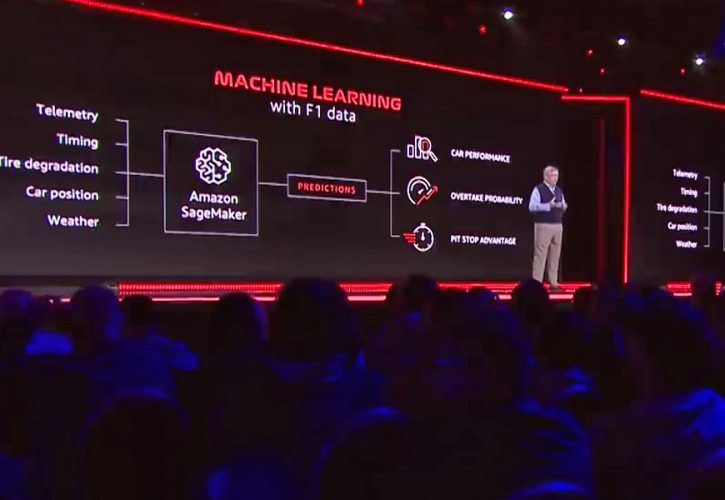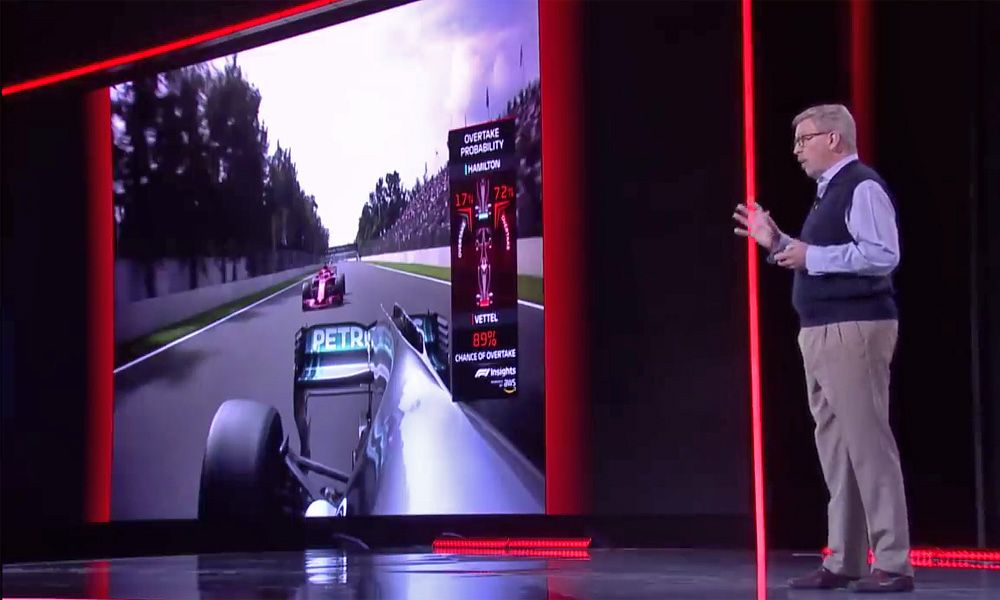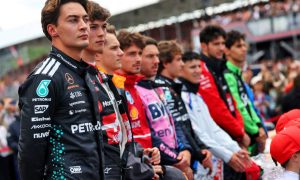
Formula 1's director of motorsports Ross Brawn has given a glimpse of new live data infographics that will be used in the sport's broadcast coverage next season.
F1 and Amazon Web Services have been working together to find new ways of interpreting and sharing the massive amounts of data already available to teams behind the scenes with the fans watching the live TV coverage of Grand Prix events.
Brawn told last week's AWS re:Invent learning conference in Las Vegas that this would be achieved using Amazon's 'artificial intelligence' machine learning tool Sagemaker.
"For next season we are expanding 'F1 Insights' for our viewers," he explained. "We can use Sagemaker to predict car performance, pit stops and race strategy.
Brawn said that this would result in "some exciting new AI integrations into next year's F1 TV broadcast."
He said the system would achieve this "by further integrating the telemetry data such as the car position, the tyre condition, even the weather."
The specific examples he gave in his presentation included new graphics showing the state of a driver's tyres, and early warnings of overheating leading to performance degradation.
"We know that somebody is in trouble: his rear tyres are overheating," he said. "We can look at the history of the tyres, how they have worked and where he is in the race. Machine learning can help us apply a proper analysis of the situation."
He said that this would help the "fans understand if the guy is in trouble or if he can manage the situation."
"These are insights the teams always had," Brawn added. "But we are going to bring them out to the fans and show them what is happening."
Another illustration he gave was a real-time analysis of overtaking opportunities, whether a driver was about to make an attempt to pass a rival - and the odds of it actually succeeding.

© Amazon Web Services
"Wheel-to-wheel racing is the essence, a critical aspect of the sport," Brawn pointed out. "With machine learning and using live data and historical data, we can make predictions about what is going to happen.
"What is great about this is that [at the moment, even] the teams don't have all this data," he added. "We as F1 know the data from both cars, and we can make this comparison. This has never been done before."
Analysis of pit stop strategy was another area that the new system could be applied to, to determine whether the team made the right call bringing their driver in and about the tyre compound they chose for the next stint.
"We are going to take all the data and give the fans an insight into why they stopped and when they stopped," he said. "Did the team and driver make the right call?"
The system would also enable Formula 1 itself to model new formats for races such as reverse grids to see whether it would help liven up races.
As well as the new information systems, Brawn also explained how new rules and regulations for 2019 will help make racing more exciting by lessening the effect of 'dirty air' on cars trying to overtake rivals ahead of them on track.
Gallery: The beautiful wives and girlfriends of F1 drivers
Keep up to date with all the F1 news via Facebook and Twitter






